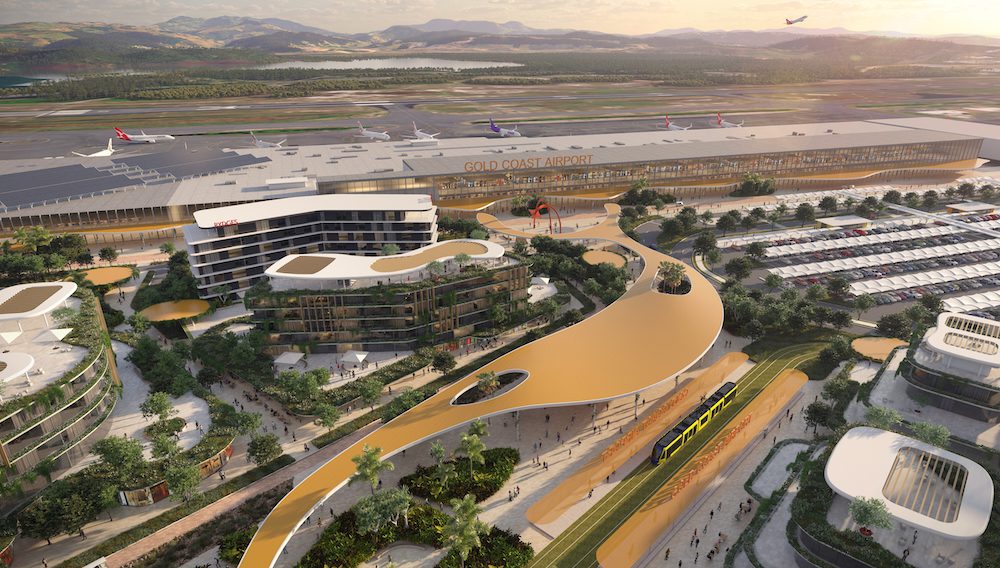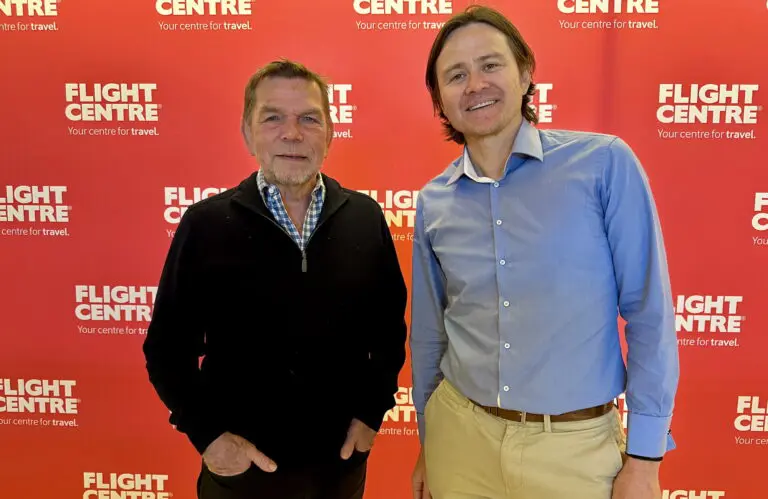A retail village, fitness hub, conference facility and tech centre form part of a new master plan for Gold Coast Airport released Monday by Queensland Airports.
The 2024 Preliminary Draft Master Plan for Gold Coast Airport also includes aviation technology like biometric check-in and digital passenger experiences, which could predict customer behaviour and offer personalised travel suggestions based on past trips.
Outlining the strategic and sustainable growth objectives of the airport, the plan ultimately aims to deliver a “future-focused” precinct for users of the hub.
The plan considers the next two decades for the airport and surrounding area but particularly focuses on the years before the 2032 Olympic and Paralympic Games.
Airport of the future

However, Queensland Airports wants the enhanced hub to be more than just an airport – but a destination in itself, serving the communities of the Gold Coast, northern New South Wales and beyond.
Queensland Airports Limited CEO Amelia Evans said that with the plan, QAL aims to create a hub of the future.
“We want to be more than an airport, we’re committed to creating a mixed-use precinct that would further benefit the local community, with the addition of a retail village, health and wellness hub and a conference and tech centre,” she stated.
“The upgrades proposed under this Master Plan are about embracing innovation and new technologies that will revolutionise air travel and enhance the customer experience.
“We’ve placed a strong focus on accessibility, ensuring the airport precinct is seamlessly connected with the rest of the city with the delivery of a public front-of-terminal plaza servicing both light and heavy rail.”
Sights on sustainability
The plan reflects Gold Coast Airport’s commitment to achieving net zero emissions by 2030.
“This means driving initiatives that will reduce emissions such as the installation of solar panels, facilitating greater use of electric vehicle on the precinct and preparing for the transition to lower carbon aviation practices such as Sustainable Aviation Fuel (SAF),” Evans said.
According to the Airports Act 1996, the airport must create and publish a master plan every eight years, including an environment strategy.
The public can provide feedback on the 2024 Preliminary Draft Master Plan until 14 June 2024, accessible for download on the website.
Traffic to double
The largest of four hubs owned by Queensland Airports Limited, Gold Coast Airport currently welcomes more than 6.2 million passengers a year contributing $514 million to the local economy. It is the country’s sixth busiest airport and one of three home bases for Bonza.

Over the next 20 years, Queensland Airports expects passenger traffic to more than double to around 13 million passengers annually – and generate nearly $1 billion in economic activity.
In February, Queensland Airports announced the launch of a dedicated waiting lounge in a new Uber pickup zone at Gold Coast Airport.
Last month, OOL also welcomed back AirAsia X’s Gold Coast to Auckland flights.







